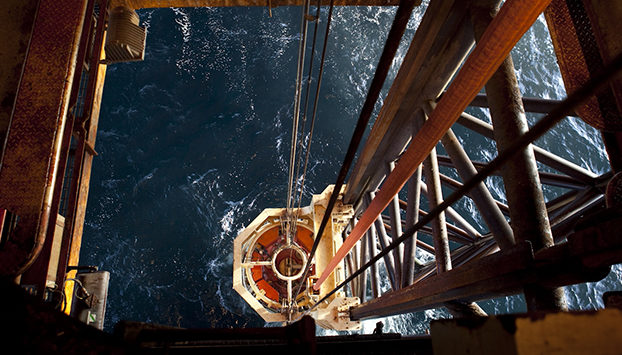
Multibillion-dollar oil and gas deals are back on the table.
More than $11 billion of transactions were announced globally in July as crude’s recovery fueled hopes of a steadier market, Wood Mackenzie Ltd. said. That’s the highest monthly total this year and brings the amount since May to $32 billion, triple that of the previous three months. Dealmaking will continue to accelerate as oil prices stabilize, according to the consulting firm.
Exxon Mobil Corp. and Statoil ASA were among the buyers after crude’s rebound from a 12-year low earlier this year bolstered confidence. Acquisitions will allow the companies to ensure future growth as the industry has slashed $1 trillion in spending to protect their balance sheets during the downturn.
“The extreme oil price volatility in the first quarter caused a lot of uncertainty,” said Greig Aitken, principal analyst for mergers and acquisitions at Wood Mackenzie. “Activity picked up as confidence returned and companies started looking towards future growth instead of focusing entirely on survival.”
Exxon, the world’s largest oil producer by market value, agreed last month to acquire natural-gas explorer InterOil Corp. for as much as $3.6 billion to add discoveries in Papua New Guinea. The company also is in advanced negotiations with Eni SpA to buy a stake in gas finds off Mozambique, people with knowledge of the talks said in July.
Statoil, Norway’s biggest oil producer, agreed last month to purchase an oil block off Brazil from Petroleo Brasileiro SA for $2.5 billion, its biggest acquisition since 2011.
For a view of the strengthening M&A market from Ernst & Young, click here.
The deals follow a period of relative quiet as buyers and sellers failed to agree on valuations amid oil’s decline. North America, home to many higher-cost shale drillers, saw the fewest transactions last year since 2004, according to data compiled by Bloomberg. Benchmark Brent crude averaged $35.21 a barrel in the first quarter of 2016, the lowest in more than a decade.
“Buyers and sellers were so far apart in terms of price expectations,” said Bijan Mossavar-Rahmani, executive chairman of oil producer DNO ASA, which made a $300 million bid for Gulf Keystone Petroleum Ltd. in July. “A lot of the sellers still were hopeful that $100 oil or at least $80 oil was around the corner, and it hasn’t happened.”
Those companies that did make acquisitions had little cash to draw on. Royal Dutch Shell Plc’s debt ballooned when it bought BG Group Plc, a rare mega-deal of the past two years, valued at more than $70 billion in April 2015. The transaction was announced just weeks before crude prices resumed their slide, prompting some analysts and shareholders to suggest Shell was paying too much.
Such anxiety may ease with Brent crude now trading around $50 a barrel, and acquisitions could pick up as buyers and sellers have more similar price expectations, according to Bloomberg Intelligence.
While crude has recovered, “there seems to be an increasing consensus that oil will not go back to over $100 any time soon,” said Philipp Chladek, a senior industry analyst for BI in London. “So the differing perceptions about the asset values that, next to the volatility, was the main deal-breaker in the past, are gradually converging.”
There’ll be plenty of assets up for grabs. Shell intends to raise $30 billion through divestitures in the three years to 2018, while BP Plc plans as much as $5 billion of disposals this year. Total SA and Eni also are putting assets on the block.
The market for oilfield acquisitions has “stabilized in the last three months and the consensus around commodity prices and where prices are going has narrowed,” said Jon Clark, a transaction adviser at Ernst & Young LLP. “There seems to now be a shift back into M&A-type activity and we’re starting to see potential divestments coming out of the majors.”
Recommended for you
